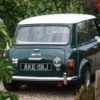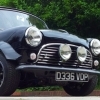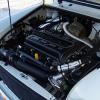i tend to go with what dan says as i have never found him to be wrong
That's very kind but I am fairly frequently wrong you know!
so why do we need to ensure that cold air goes into the carb???
Most of the time you don't. Yes colder air is more dense but the amount of increase for a temperature drop of say 10 degrees is very small and you won't see a drop of that much without some form of fridge. In fact if you use some of that awful corrugated hose all you'll do is reduce the amount of air flowing. Think about how large a balloon and how much gas you need to use in order to change the density of the air enough to lift a couple of people up. Matt probably has the calculations for that! It is true however that cold air will make your engine work a little better and so by all means feed the carb with cold air, so long as you understand that you have to do it with a smooth bore rigid hose with properly flowed bends for it to work at all. Even then it will gain you very little. The point is that for the amount of time the charge is in the manifold, heating it makes almost no difference to the temperature of it. How long does it take your oven to heat up at home? Do you think it takes that long for the elements to get that hot? They glow red within seconds, it's the air that takes time to heat up. Once you have atomised the fuel it needs to stay like that, it will take any chance it can to shed energy and return to a liquid state. The charge is very cold naturally once the fuel has evaporated into it, that incoming air and the metal of the carb are where the fuel draws energy from in order to evaporate. This has the effect of cooling it. That is what then cools the manifold and makes the metal cold. (Incidentally the carb not being allowed access to enough warmer, not warm but simply warmer, air is what causes actual carb icing because of this evaporation by-product. Not air flowing into the carb but just air surrounding it that can give it a bit of warmth). Another point is that you really shouldn't be trying to cool the air once the fuel has mixed with it anyway, fuel and air change density at different rates with the change of temperature so if you cool charge that is already mixed the strength of it will probably be wrong. Yes forced induction cars use intercoolers as said above. You will note that these are generally used before the fuel is mixed or injected and so they are simply cooling air, not charge. They don't do this to 'supply the coldest air possible' but simply to counteract the enormous amount of heat injected into the air by the act of compressing it in the first place. If the air coming out of the intercooler is close to the same temperature as the air entering the compressor then it's done its job. Otherwise the compressor is partly defeating its own purpose and harming its own efficiency. Someone above mentioned the standard manifold not being heated. Partly it doesn't need to be heated as drastically as an ally one because its cast iron and as such doesn't conduct heat into the charge as well and so won't be cooled to the same degree by the cold charge flowing through it. And partly of course, it IS heated. It's part of the exhaust manifold, they are the same casting.
You don't have to apologise for starting this thread, that's why we are here. It has come up a few time before though.
Choose to believe me or choose not to. It's up to you. This is what I understand to be the process involved though and is all factual as far as I know. Many here seem to have the same understanding.





















